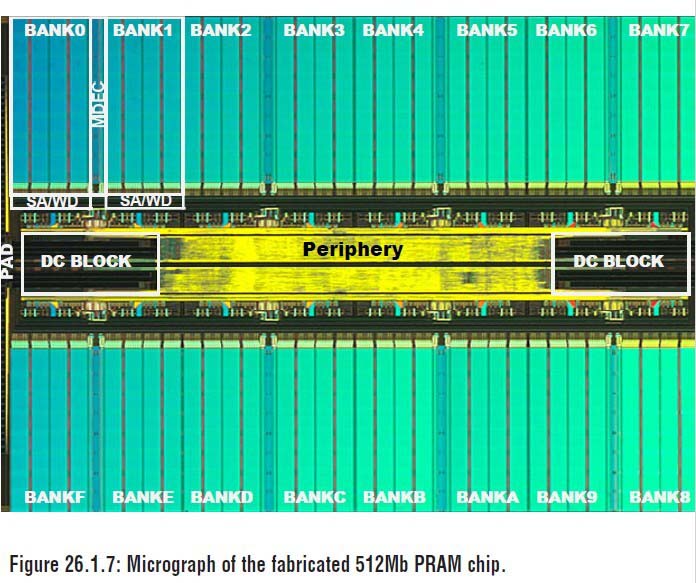Buggi, In your list MRAM should read PRAM (phase change). PRAM has the mediocre density (no mention of the exact density of MRAM in that article). Just added some more data from the article you posted and added it to your text (your text in Italic) in order to retain the technical data on this thread:
=> MRAM, available at 4Mb since '06, very good write speed, but high programming current (155mA), Freescale
=> SPRAM, expirimental, at 2Mb, 0.2u process, 8.3mm^2 die, 200uA write current, write latency 85-100ns, read latency 40ns, 1.8V, reliability 10^9 cycles, very far from being a competitor, Magnetic RAM development Hitachi, SPRAM stands for Spin-Transfer Torque RAM
=> PRAM 512Mbit 90nm = 91,5mm^2 , read latency: 78ns avg, 8ns burst, write latency 500-1000ns, write bandwidth 4,64MB/s, reliability 10^5 cycles, retention: 10 years, 3 metal wiring, from Samsung
=> SPSN Quad 8Gbit 90nm = 155mm^2
=> SPSN Quad 4Gbit 90nm = 76mm^2
SPSN Quad has 8x size and has a smaller DIE. Ok, seems like we could forget PRAM for the next YEARS! -> done.
Nice conclusion. PRAM that was talked up as a competitor for Spansion's Mirrorbit is no competion any time soon indeed. Not at these mediocre mem cell densities. That leaves NAND derivatives like OneNAND (high end cell phones), and DRAM for certain niches (data centers).
Regards,
Rink
From the pic in Buggi's article it's amazing that the density is so bad (it's just a diode + phase change resistor):

There's quite a lot of circuitry besides the mem cells:
 |






